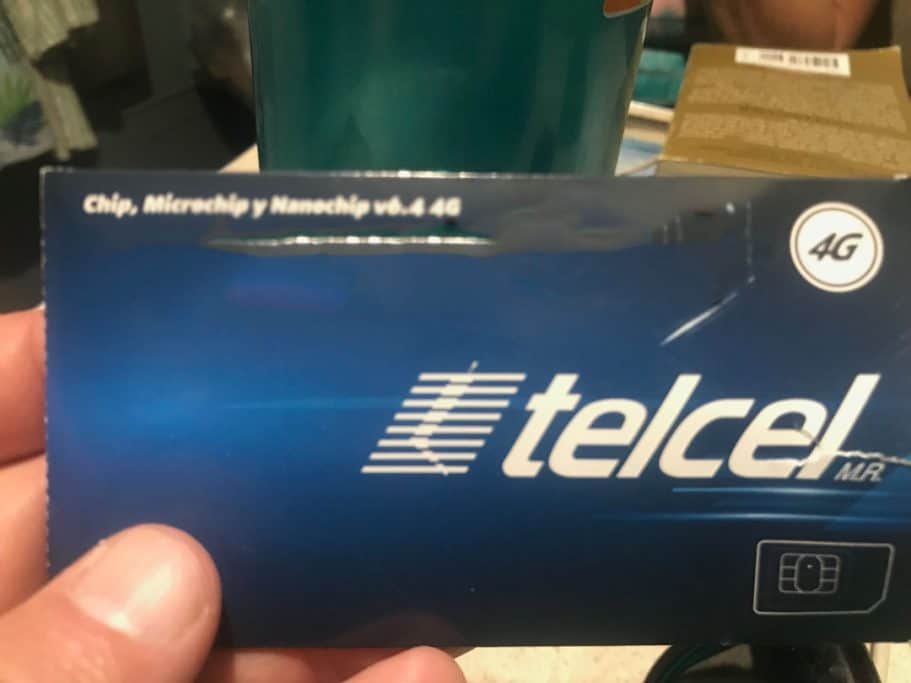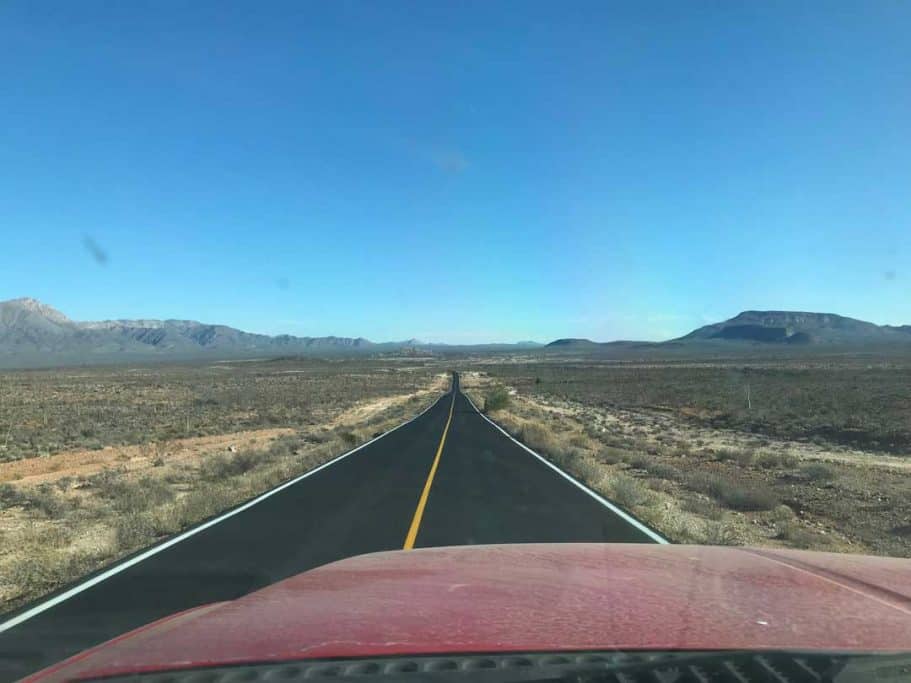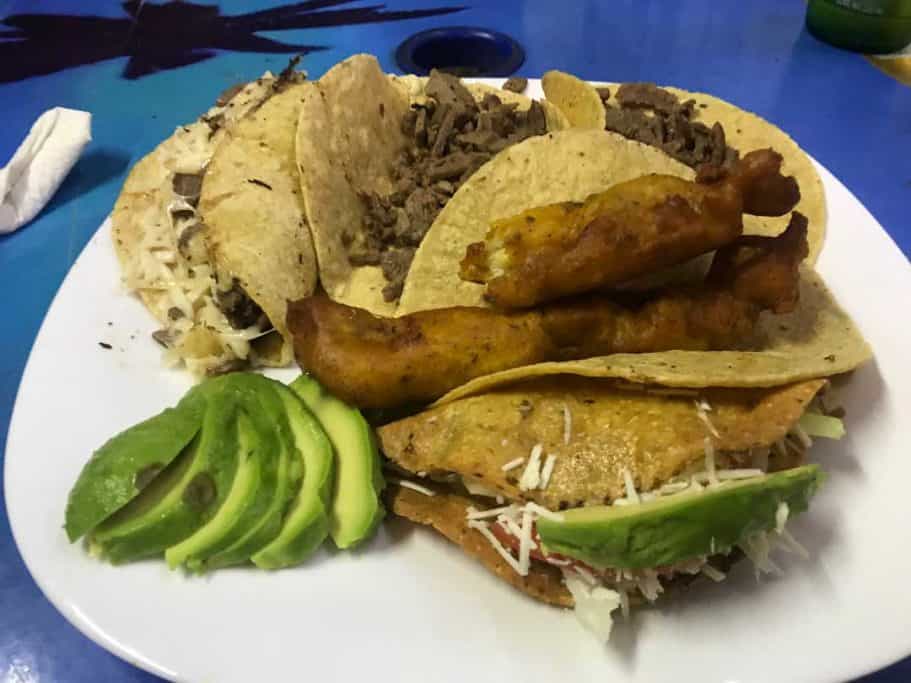Last Updated on September 2, 2022 by Chris and Lindsay
These tips for RV travel in Baja, Mexico will make your experience safer and more affordable. And if you’re not traveling by RV most of these tips apply!
So you’ve decided to make the trip to Baja in your RV. Your friends and family think you are crazy – especially if you have kids in tow. Everyone tells you how dangerous it is – especially since you don’t speak Spanish (you don’t, right?).
There’s a good chance you’re not going to make it back – so they say. But in reality, you’ve just made an amazing decision!
And we want to support this decision by giving you a few quick tips for RV travel in Baja!
Tips for RV Travel in Baja, Mexico
Take it from us – we learned each of these things through trial and error.
1) Border crossing – Tecate is where it’s at.
Crossing the border at Tecate is great. Getting there on the US side can be a little hectic as I-8 and/or Hwy 94 have lots and twists and turns.
The bigger your rig, the more anxious you’ll likely be – especially driving at night. It’s a good idea to camp at Potrero County Park, a short 20-minute drive from the Tecate border.
You can park on the US side and walk your immigration paperwork through. Or, if it’s not so busy, you can simply drive up to the border and let the agents help you on the spot.
2) Get your FMM online.
If you’re visiting Baja for less than 7 days then you don’t need to complete your FMM. Nobody will tell you that at the border – particularly at Tecate.
But for any stay over 7 days, and up to 180 days, you need your tourist visa. You can complete the process online. Do it.
But be sure to print BOTH the FMM and the receipt.
This was a $64 mistake for us!

3) Buy Mexican auto insurance online in advance.
You are lawfully required to have Mexican auto insurance – whether you are in Mexico for 1 day or 180. Again, nobody at the border will tell you this.
And it’s likely they won’t bother to check either.
But if you get into an accident (and the likelihood increases the longer you stay and more you see the wild side of Baja drivers) you could end up in a bad place without it.
We recommend purchasing your policy through Baja Bound.
Our policy for our truck camper for 365 days was less than $1 per day.
4) Check your cell phone policy in advance.
Then check again. And a third time.
We have AT&T and our cell phones work great in Baja.
Our data hotspot is limited to 15G per month. But we knew that.
What we didn’t know is that our Verizon data plan would not work thanks to some backward thinking/explaining from the company.
We don’t recommend Verizon. But then again if you triple check how your plan works with your carrier.
Maybe check a 4th time. We checked 3 times and that was not enough!
READ MORE: Everything you need to know about camping in Baja.
5) Buy a Mexican SIM card for better data.
Depending on your cell phone carrier it is simple to unlock your phone.
Ours were paid off a long time ago and we simply followed an AT&T website form to unlock them.
Then purchasing a TelCel SIM card was simple and affordable.
For 500 pesos (about USD$27) you can get around 12G of data that works great wherever there is cell service (which is still TBD in many places in Baja!)

6) Use your credit card when you can.
The best exchange rates are almost always negotiated by the banks via credit card use.
You CAN use your credit card in many places in Baja – particularly those close to the border and in bigger cities and towns.
Gas stations are a great go-to for credit card use. You want to use your credit to save a few pesos here and there in your exchange rate.
The longer you travel, the more the pesos add up.
7) Pay in pesos when you can’t.
Paying in dollars is typically far worse exchange rate as the merchant has to then exchange the money themselves and charges you a few pesos for that.
So if you can’t pay with a credit card, grab pesos out of an ATM and use these.
You’ll get a much better exchange rate from the ATM than you will from a vendor accepting US dollars.
8) Check with your bank for ATM withdrawal fees and policies.
Some US banks charge no fee on their end AND will reimburse you for ATM fees on the Mexican bank end.
Expect a $3-4 fee per withdrawal at most Mexican ATMs.
If your bank reimburses these expenses then you will have no issues taking out cash at any ATM.
However, if you are like us and don’t get your ATM fees reimbursed, then you may end up finding your favorite bank chain in Baja.
Surprisingly, the more remote the ATM the lower the bank fees seem to be.
9) Withdrawal as much in pesos as you can (and feel comfortable) at once.
Mexican ATM fees are per transaction so you can get a better overall exchange rate if you take more pesos out in each transaction.
For example, it makes no difference in ATM fees whether you take out 100 pesos or 10,000 pesos.
So if you feel comfortable carrying around that much cash (or stowing it away in a safe place) then it helps your overall exchange rate by reducing the fees you pay.

10) Campgrounds will almost always have room.
If you’re looking for camping in Baja the options are endless. Most campgrounds are big enough to accommodate RVs at any time of year.
And many have overflow as nearly all are interested in your peso. If you aren’t interested in boondocking in a free campsite, be sure to ask campground hosts if they can make room for you somewhere.
Unlike in the US, their answer will almost always be yes.
11) Watch the meters at gas stations and propane stations.
One of the biggest chances for scam in Baja is at the fuel pump. But this can be mitigated by several tactics.
Immediately leave your car upon pulling up to the pump. Watch the attendant grab the hose and ensure you watch the meter prior to the attendant pumping fuel.
Be sure they “zero” out the meter. Most will tell you and point to the meter.
But every now and then a review will pop up on iOverlander where a driver got scammed by a savvy fuel attendant.
12) Pay for fuel like you’re a ten-year-old.
There are 2 scams related to paying for fuel in Baja.
The first is in the attendant “miscounting” the amount of money you hand them. When paying for fuel with pesos be sure to count the bills out in your hand as you deliver them to the attendant.
Be sure there is absolutely no confusion about how many pesos you handed him or her.
This means acting like a ten-year-old paying for your first purchase on your own.
The second scam is in giving you the wrong amount of change back.
Try to give as exact payment as possible. Sometimes attendants will short change you as much as they think they can get away with.
13) Carry Little Debby oatmeal cream pies for the military checkpoints.
While we have yet to hand them over, we’ve been told they are great for smoothing over any inspection.
Consider it a gift, rather than a bribe! Although we must admit that, to date, we’ve eaten far more of these delicious treats than we’ve given away!
READ MORE: Check out the best FREE camping in Baja.
14) Drive BELOW the speed limit.
Not only does this protect you from the infamous tope, but also it makes you less of a target.
Police will pull you over because you are a tourist rather than pulling over a Mexican national if you give them the reason to do so.
Speeding is one way to convince them you’re worth pulling over.

15) Come to a complete stop at every stop sign and stoplight.
The best way to convince a police officer to pull you over is to not come to a complete stop at every stop sign and stoplight.
Locals will roll right through most of these. And you’ll be tempted to do so as well.
But this will make you a target to municipal police (See #14 above).
Don’t be a target any more than you already are.
16) Don’t look the clown in the eyes at the stoplight.
OK, so there’s not likely to be a clown at every stoplight.
But in larger cities and towns you can expect performers, salesmen and windshield washers at nearly every busy intersection.
If you act like you’ve enjoyed their presence they will ask for pesos. It’s not that we don’t like entertainment.
It’s rather that we don’t like paying for things we don’t ask for.
But our pup doesn’t like street performers and she growls loud enough to deter most from approaching us.
17) Everything is negotiable in Baja – except for the prices in the grocery store.
Grocery store prices tend to be fair enough, especially if you shop in local stores and markets.
But you can try to negotiate prices on most anything. Although do note that prices are pretty regularly posted in common shopping centers.
But every now and then it doesn’t hurt to bargain your way into a better deal on a handful of street tacos. Or if you’re looking for a deal camping you can always try to negotiate as we did in Alisitos.
Just don’t hassle to the point you take away the livelihood of the merchant. There’s a difference between getting a fair price and being cheap.
Don’t be cheap. Prices are already cheap enough in Baja.
18) Eat where the locals eat.
Sure your stomach might not be as fortified as the native people…yet!
But if there is a crowd near a taco stand, it’s likely there is a reason and you are in for a treat.
And yes, if you spend enough time in Baja you’ll eventually build up a resilient stomach that can handle the most local of local foods!

19) Don’t eat where there are no locals.
Either the stand is empty because of sub-par food quality or surrounded by loud American and Canadian tourists. The locals know best. (See #18 above)
20) Driving times indicated on mobile GPS apps are virtually pointless.
Even the distances indicated can be misleading.
When you drive in Baja you never know when you’ll come across a cow in the road or a total road washout or if or for how long a military checkpoint might inspect your vehicle.
Even crossing through some of the mountains can take quite a bit longer than your mobile GPS knows how to calculate.
And then there’s the tope… the dirty little tope…
21) Beware of the Tope.
What tope? THAT tope!
Tope’s are a story in and of themselves. As you planned your trip to Baja you likely had a friend tell you about the tope that literally jumped out of nowhere to take out their suspension.
We had 2 different friends rip their truck camper tie downs out of their camper by a “sneak-tope.”
Our policy is going slow in any and every population center. Sometimes these are marked with strips in the road.
Other times they’re not. Don’t expect topes to be marked.
The locals know where they are and the tope seems to be the nemesis of the gringo traveler.

22) Don’t pay the bribe.
Pay the ticket, not the bribe.
Paying the bribe only hurts the rest of us since it empowers any police requesting bribes to continue in their debauchery.
Do note that MOST police officers are honest and upright. And typically you only have to worry about the “Municipal” police and not the Federal ones.
But if you happen to have a particularly pushy police officer tell him to write you the ticket so you can go to the local judge to pay it.
Most of the time this will call the officer’s bluff right then and there.
But if not, it’s better to pay in a local police station than on the street.
23) Expect good things at the Military Checkpoints.
Unless you’re legitimately in the wrong – like carrying drugs, weapons or smuggling people in your vehicle – there’s a significant chance you’ll either be waved through most checkpoints or, at the least, engaged in great conversation with the Federalis.
We are young (ish) and traveling without kids so that makes us a little more suspicious than a family of 5 traveling in a Class C motorhome.
But we have never had more than a quick inspection and we were back on our way.
But do be sure to watch every move of the officer if you are asked to get out of your vehicle. And do know that you have a right to stay with the vehicle during every part of the inspection.
We have a dashcam that we turn on every time we approach a checkpoint. So far, so good.
24) Beware of the Cow.
What cow? THAT cow! We aren’t exactly sure why it happens, but nearly every evening just before sunset the cows come out to party along the highway.
We’ve had a few times we pushed the daylight hours to arrive at our destination.
And Every time we did we encountered party cows on the edge of the highway.
Beware of the cow.
25) Don’t drive at night. Don’t drive at night. DON’T DRIVE AT NIGHT!
Baja Driving Rules #1-3 are the same: Don’t drive at night.
But if you have to, pick a semi-truck that is going around the speed at which you feel comfortable and lock in cruise control behind it.
Better they hit the cow than you.
Truck drivers also know where the potholes, crumbling roadways and standing water will be on the highway.
26) Don’t expect the road conditions to improve.
They will. For sure they will – somewhere. Just don’t expect them to improve where you are and then you can be pleasantly surprised when they do improve.
Like joyously surprised – as Lindsay was after our full day of offroad driving.
27) Consider pulling in your side-view mirrors when driving Hwy 1.
The bigger your rig, the greater your chance of having your mirrors collide with oncoming semi-trucks.
Of course, for most of us, if our mirrors collide, it’s more than likely our entire vehicles will collide.
In that case, I guess it doesn’t matter if you leave your side-view mirrors in or out!
28) Don’t look over the shoulder.
What shoulder? THAT shoulder!
There really is no shoulder for 95.7% of the highway system in Baja.
It’s a steep drop off and likely your passenger (in my case, my wife) will feel more like they’re hovering over an abyss than riding in the front seat.
If you happen to have a flat tire, break down, etc. on the highway know that it is 100% OK to stop on the highway if there’s nowhere to turn off.
Not only will Baja drivers be more inclined to stop and help you on the spot, but also there is a service that cruises the highway twice per day in each direction to assist you.
Seriously, don’t look over the shoulder or you’re bound to end up driving off!
Wrapping Up
These tips for RV travel in Baja are sure to make your experience safer, more affordable and more enjoyable.
And there are countless more ways that you can travel safer and more efficiently through the peninsula.
Be sure to let us know what tips work best for you as you travel through Baja!
